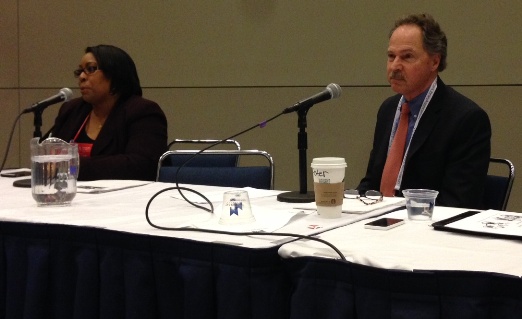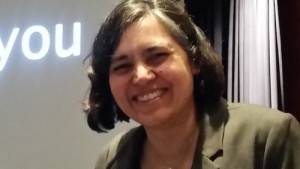
One in six American adults struggles with basic English literacy. That translates into 36 million people between the ages of 16 and 65 who grapple with reading on a daily basis, according to a 2013 study called Program for the International Assessment for Adult Competencies (PIAAC).
Speakers Michelle H. Washington, director of ALA’s Office for Literacy and Outreach Services (OLOS), and Peter Waite, executive director of the nonprofit ProLiteracy, based in Syracuse, N.Y., cited that statistic on February 1 at the 2015 ALA Midwinter Meeting in Chicago and talked about the work being done to help libraries reengage in adult literacy programs.
In that same PIAAC study, said Waite, the United States ranked 16 out of 26 countries in adult literacy. “That’s a shocking indictment of where we are and where we need to go,” he said.
Ten years ago, when the pressure increased for libraries to do more with less, there was a significant drop-off in some of the core services and programs geared toward adult literacy, Washington said.
Yet with immigration reform on the national agenda, there remains a growing need to teach English as a second language. This tradition of literacy instruction has historical roots, Waite said. In the 1900s and even earlier, libraries were perceived as institutions of social education — to teach women, freed slaves, and others how to read and write. “Libraries have had a critical role in American education,” he said.
During a video presentation, a quote from Frederick Douglass appeared on screen: “Once you are able to read, you will be forever free.”


